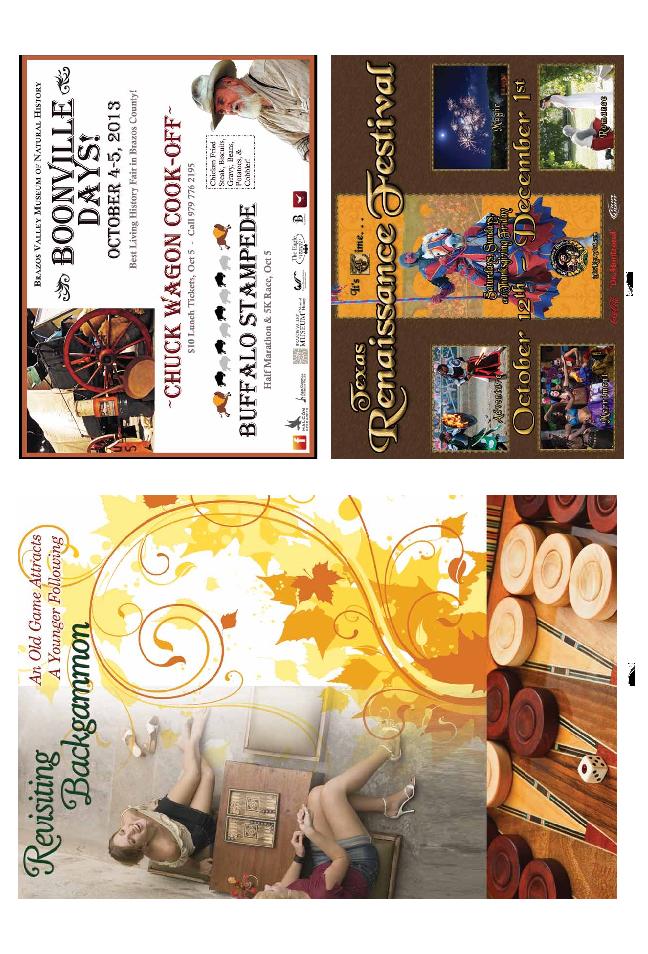
those days, we considered a night at Barnes-n-Nobles with coffee and magazines a hot date.
And then we discovered a mutual love of Backgammon, a game that neatly folded into a
tiny briefcase for easy transport. In fact, we took our board everywhere. We played in cof-
fee shops, in pubs, and in parks. As a result, we learned a great deal about one another,
leaning over our Backgammon board.
trons, stopped by our table declaring, "My grandfather loved that game! I didn't know
anyone still played!" Together, we were antiquated in our youth, prematurely aged by our
love of games and cheap entertainments.
and nations. Archaeologists found boards similar to our modern Backgammon board,
potentially dating as far back as 3,000 BC, in Iran. In Ancient Rome, boards and written
rules have been found for a game known as tabula, meaning "table" or "board", which
uses three dice, rather than modern Backgammon's two dice. Also popular in China,
Backgammon was a betting game before Chinese checkers stole the gambling spotlight.
combination of the terms "back" (due to the offensive direction of opponent's pieces in a
strike) and the Middle English term "gamen" (meaning "game" or "play") made its first
written appearance in 1650. Even before this moment of linguistic significance, Backgam-
mon blotted across Europe in various forms before finally (and legally) arriving in England
in the 18th Century. Prior to this, Elizabethan laws and church regulations prohibited
table or betting games. However, upon its legal introduction into leisure English society,
Backgammon grew in popularity, eventually making its way to America, where it did not
catch on with great popularity until the 1920's invention of the betting cube. At that time,
and with the assistance of the paparazzi snapping photos of famous socialites playing Back-
gammon before a backdrop of glitzy cigars and martini glasses, the game gained ground
as a common pastime.
Backgammon. Sunday mornings in our home begin with coffee and records and a short
tournament, where the winner chooses our dining out option for the week. The game is
woven deep into the fabric of our family. It is interesting to consider Backgammon's rich
history, as it possesses so much of our own history.